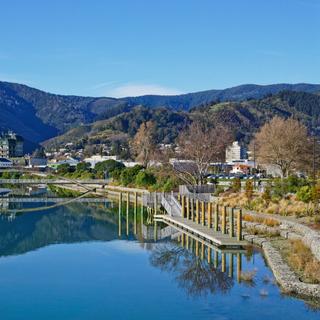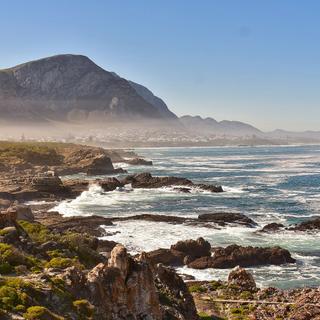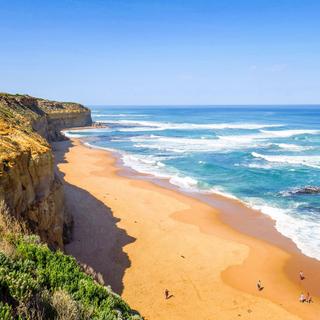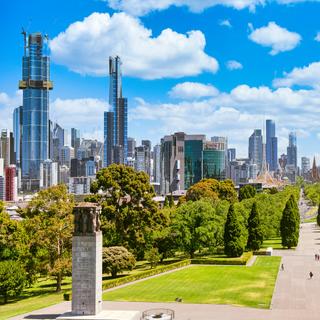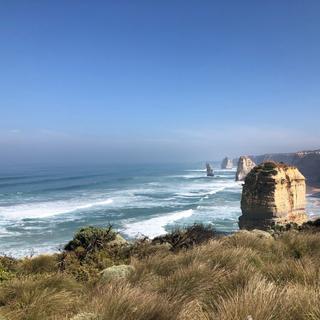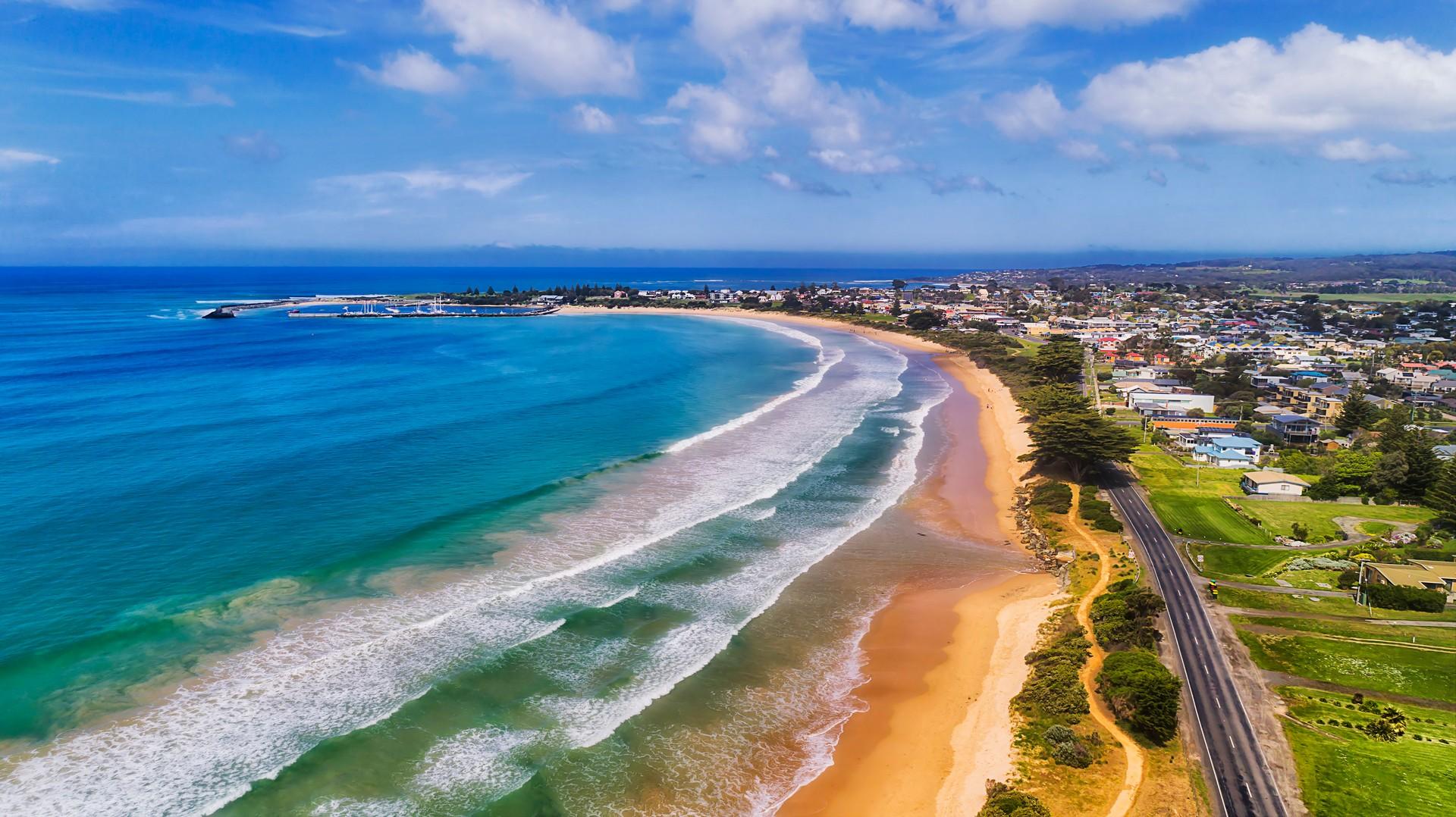
Apollo Bay weather and climate in 2025

Apollo Bay weather and climate in 2025
Day
15 °C
Night
8 °C
Sea
13 °C
Precipitation
103 mm
in month
Rainy days
17 days
in month
Daylight
10 hours
average
Sunshine
5 hours
average
Humidity
72 %
Weather charts for Apollo Bay
Destinations nearby and activities
Destinations nearby
Activities in Apollo Bay

Find more destinations like this
Destinations with similar weather to Apollo Bay
Other destinations in Victoria - Australia
Closest cities for Apollo Bay
Last week's weather in Apollo Bay
During the week of 7 July 2025 - 13 July 2025, temperatures averaged at 11 °C (52 °F) during the day and dropped to 7 °C (45 °F) at night. These temperatures are slightly below the long-time average for Apollo Bay, being 14 °C (57 °F) for daily temperatures and 8 °C (46 °F) for night temperatures. On average, the temperatures during various times of day (in local time) were recorded as: 7am 8 °C (46 °F), 10am 9 °C (48 °F), 1pm 11 °C (52 °F), 4pm 10 °C (50 °F), 7pm 9 °C (48 °F), 10pm 8 °C (46 °F).
During this week: 2 days without rain, 2 days with light rain and 3 days with moderate rain were observed. Apollo Bay received 12 mm (0.47 in) of precipitation throughout the week, which is below its long-term average of 25 mm (0.98 in). On average, the cloud coverage during daylight hours (from dawn to dusk) was 74 %.
Average speed of wind was 5.9 m/s. The most common wind direction(s) were North-West and West. The atmosferic pressure ranged from 994 hpa to 1024 hpa. The average air humidity was 95 % in Apollo Bay.
On average, there were 1.5 hours clear skies, 2.5 hours partially overcast skies, 3.5 hours overcast skies and 2.5 hours rainy weather during the daytime (from dawn to dusk). Average time of sunrise was 07:42, average time of sunset was 17:18.
Weather overview for Apollo Bay
Weather overview
Apollo Bay, located in Australia, is renowned for its predominantly hot weather patterns. Daytime temperatures fluctuate considerably throughout the year, ranging from an average low of 14 °C (57 °F) in the cool month of July to a peak average high of 23 °C (73 °F) during the warmer month of February. Similarly, the temperature during the night varies, from the warmest nights in February at 14 °C (57 °F), to the coldest in July at just 8 °C (46 °F). February stands out as the driest month with a mere 7 days of rainfall, while July is recognized for having the highest frequency of rainy days, totaling 17 days. When it comes to sea temperatures, the warmest can be found in February, reaching 18 °C (64 °F), with the sea reaching its coolest in September at 13 °C (56 °F).
January weather
A noticeable increase in daytime temperature is observed in January at Apollo Bay, reaching 23 °C (73 °F), alongside a similar rise in sea temperature. As the tourist season gets underway, there is also a decrease in the number of rainy days. Night temperatures are on the rise too, reaching 13 °C (56 °F), and the maximum number of sunlight hours is usually seen this month.
February weather
With February's arrival, Apollo Bay's tourist season is in full swing. This month sees both the sea and daytime temperatures peaking, with sea temperatures reaching 18 °C (64 °F) and daytime temperatures at 23 °C (73 °F). There is a significant decline in the number of rainy days, down to a monthly low of 7 days, and rainfall quantities are also at their lowest.
March weather
In March, a decrease in both daytime 22 °C (71 °F) and nighttime 13 °C (56 °F) temperatures can be noticed in Apollo Bay. As the peak tourist season approaches, the number of rainy days begins to rise, now at 10 days. The decreasing trend of sunlit hours continues with a current average of 6 hours.
April weather
April marks the start of cooling sea temperatures, now at 17 °C (62 °F), as well as a continued downward trend in both day and night temperatures, with day temperatures at 19 °C (67 °F) and nighttime temperatures dropping to 11 °C (52 °F). Rainy days keep increasing, with the figure now at 12 days, and the amount of rainfall begins to escalate as well. The wind speed reaches its lowest point of the year at 6.
May weather
A further decline in daytime temperature is observed in May, represented by an average value of 17 °C (62 °F), and a downward trend in sea temperature also continues, now registering at 15 °C (60 °F). The frequency of rainy days keeps rising, reaching 15 days, while the overall rainfall accumulates to 75 mm (2.93 in). The trend of decreasing night temperatures also persists.
June weather
June in Apollo Bay marks the onset of the wet season. There is a continuing trend of decreasing day 15 °C (58 °F) and sea 15 °C (58 °F) temperatures, and nighttime temperatures also keep falling, now reaching 8 °C (47 °F). The minimum amount of sunlight hours experienced in Apollo Bay occurs in this month, with an average of 4 hours. The increase in the count of rainy days is also notable, now at 17 days.
July weather
July, the coldest month in Apollo Bay, sees daily temperatures reaching a minimum of 14 °C (57 °F). Sea temperatures continue their own downward pattern, similarly decreasing from previous months. The amount of rainfall hits its maximum for the year, recorded at 106 mm (4.18 in), and the peak frequency of rainy days is evident as well, with a count of 17 days. Night temperatures plummet to their lowest at this time.
August weather
August continues to be part of the wet season in Apollo Bay, with temperatures starting to rise slightly to 15 °C (59 °F). The strongest winds of the year can be felt this month, averaging 7, and the amount of bright sun hours also begins to increase, now at 5 hours.
September weather
By the time September arrives, the lowest sea temperatures have been recorded at 13 °C (56 °F), while day temperatures maintain an upward trajectory, now at 16 °C (61 °F). The number of rainy days begins to decrease, marked at 16 days, and the early signs of decreasing rainfall are present as well. The increase in night temperatures is also noticed, as they reach 8 °C (47 °F). The ascending trend of sunny daytime hours continues, now averaging 5 hours.
October weather
October sees a continued decrease in rainy days, now at 14 days in Apollo Bay, and the rainfall quantity also keeps dropping, currently at 78 mm (3.09 in). The day temperature is following a similar upward trend to previous months, now at 18 °C (64 °F), and the rise of night temperatures is also observed, now at 9 °C (49 °F). The number of sunny hours keeps climbing, averaging 6 hours.
November weather
As November arrives, an increase in daytime temperatures can be seen, with the average reaching 20 °C (67 °F), and sea temperatures also begin their upward swing. The fewer rainy days noted in November, at 11 days, and a concurrent reduction in rainfall, now at 64 mm (2.52 in), contribute to the rising number of sunlit hours, currently at 7 hours. The nightly temperatures keep rising, now averaging 11 °C (51 °F).
December weather
December in Apollo Bay is characterized by the continued ascent of daytime temperature, which now stands at 21 °C (70 °F), and sea temperatures follow suit with an increase. Rainy days are becoming less frequent, listed at 10 days, and rainfall volume continues to decrease, indicated at 58 mm (2.30 in). The night temperature also progresses upward, measured at 12 °C (53 °F), and the number of bright sun hours goes on rising, now at 8 hours.
FAQs
What is the expected sea temperature in January at Apollo Bay?
The sea temperature in January at Apollo Bay tends to be around 17 °C (63 °F). While this temperature might not be ideal for extended swimming sessions, there are individuals who find these conditions suitable.
Does February fall within the rainy season in Apollo Bay?
Apollo Bay does not experience a rainy season in February; you can anticipate only 7 days of rainfall throughout the month.
Is Apollo Bay a favorable destination for a visit in March?
March is considered a pleasant month for a visit to Apollo Bay, as the rain is sparse with only 10 days of rainfall. Some individuals might feel a bit of coolness at 22 °C (71 °F), but many find it comfortably warm. The nighttime temperature of 13 °C (56 °F) might suggest dining indoors or adding an extra layer for an outdoor evening meal.
What is the average count of rainy days in Apollo Bay during April?
On average, you can expect about 12 days of rainfall in Apollo Bay throughout April. This reflects that nearly 40 % of the month could have rain.
How does the sea temperature in May affect activities in Apollo Bay?
With the sea temperature averaging 15 °C (60 °F) in May, water-based activities may be less appealing, potentially leading to a decrease in swimming or water sports.
Is June characterized by a high amount of rainfall in Apollo Bay?
Yes, with an average of 17 days of rain, June is one of the months in Apollo Bay with a higher likelihood of rainfall.
How do the climatic conditions in July at Apollo Bay affect outdoor activities?
July's cold daytime temperature of 14 °C (57 °F) along with the maximum monthly rainfall can significantly limit the range of comfortable outdoor activities available.
How does the wind speed in August affect the atmosphere in Apollo Bay?
With an average wind speed of 7, August brings the windiest conditions of the year, which may influence various outdoor and water-based activities.
How do diminishing sea temperatures in September influence beach visits in Apollo Bay?
The dip in sea temperatures to 13 °C (56 °F) during September can deter visitors from swimming and may result in reduced beach activity.
What impact does the current weather trend in October have on tourism in Apollo Bay?
The rise in both day 18 °C (64 °F) and night 9 °C (49 °F) temperatures, coupled with diminishing rainfall, creates a more inviting climate for tourists visiting Apollo Bay in October.
What is the average night temperature in Apollo Bay during November?
In November, the average night temperature in Apollo Bay is 11 °C (51 °F), which should provide comfortable evenings for most outdoor activities.
What is the daytime temperature like in Apollo Bay during December?
Daytime temperatures in December at Apollo Bay are quite pleasant, averaging around 21 °C (70 °F), which is comfortable for a wide range of outdoor activities.

